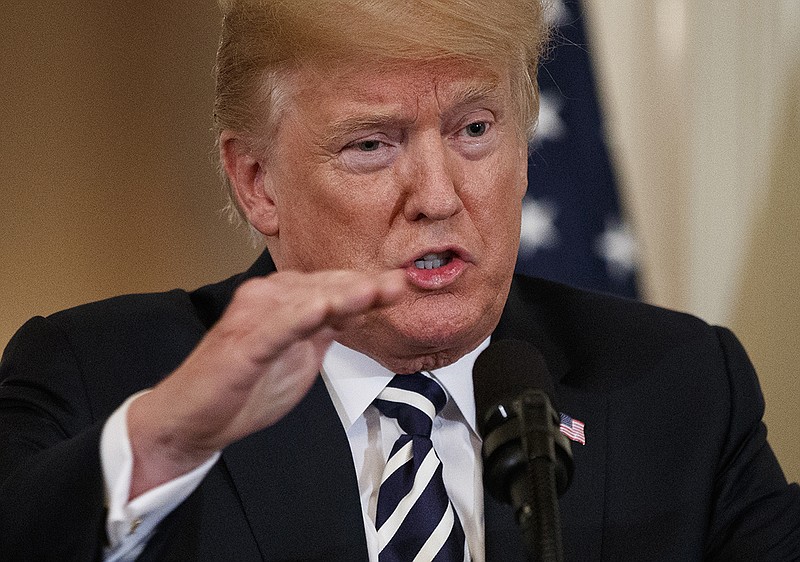The cliff the country nearly fell off in 2016 cannot be emphasized enough.
The man who presided over the country that year, and the woman he wanted to succeed him, made no bones about the United States economy. Life, as we once knew it, had changed. Our necessary global view had to temper our expectations. The days of a humming economic engine were done.
Former President Barack Obama's 2013 budget, for instance, noted, "in the 21st century, real GDP (gross domestic product) growth is likely to be permanently slower than it was in earlier eras "
The president talked about a "new normal" of 2 percent growth. Paul Summers, his director of the National Economic Council, termed the coming era "secular stagnation."
Hillary Clinton, a former secretary of state under Obama and the Democratic candidate for the presidency in 2016, said a President Donald Trump "will cause millions of Americans to lose their jobs" and "would undo much of the progress we've made and put our economy at risk."
Vaunted New York Times columnist Paul Krugman said the new president's victory portended "a global recession, with no end in sight."
Obama, during the campaign, said, "When somebody says like the person you just mentioned who I'm not going to advertise for [Trump], that he's going to bring all these jobs back. Well how exactly are you going to do that? What are you going to do? There's no answer to it. He just says. 'I'm going to negotiate a better deal.' Well, how? How exactly are you going to negotiate that? What magic wand do you have? And usually the answer is, he doesn't have an answer."
Turns out, he did.
Even before last December's Tax Cuts and Job Acts, with Trump in office, the economy had started moving. Companies added jobs, growth began to expand, people were going back to work in greater numbers.
After his bill passed, though, corporations began handing out bonuses, increasing worker pay and hiring even more people.
Using Internal Revenue Service data, the Heritage Foundation calculated that the tax bill will save taxpayers an average of $1,400 annually. A married couple with two children will save $2,917.
Indeed, the report said, every congressional district in the U.S. will receive some tax benefit, including an average of $2,326 in the San Francisco congressional district of U.S. Rep. Nancy Pelosi, the Democratic minority leader who called the taxpayer savings "crumbs."
Democratic U.S. Senate candidate Phil Bredesen, a former Tennessee governor, also has referred to the savings as "crumbs."
With state primaries being held tomorrow and a general election in November, voters must not forget which party advocated low growth and which party said the status quo wasn't good enough.
Last Friday, the federal government announced that the economy grew 4.1 percent in the second quarter. Consistent growth of 3 percent and peaks of 4 percent or more were all but impossible, the architects of - and pundits who advocated - Obamanomics said during the previous president's administration.
The economy not only was driven by strong gains in consumer spending, business investment, exports and government spending, but consumer prices also grew less in the second quarter than they did in the first.
The Commerce Department even was able to revise its first-quarter reading of 2 percent to 2.2 percent.
Economic experts naturally don't expect the good times to last for years, but the same economic experts previously said the lofty growth in last week's report was unlikely to ever happen again.
However, we're not wild about Trump calling the numbers the "best financial numbers on the planet" and saying "we're going to go a lot higher than these numbers."
We want the growth to continue, and we want the president - and, in turn, the country - to be confident, but the president's usual hyperbole always scares us a little. It gives his opponents plenty of ammunition even when the economy delivers good but not fabulous news.
That's precisely what could happen just days ahead of the mid-term elections. Many experts are predicting the country's third-quarter growth will still be at or above 3 percent, but if it's not above 4.1 percent Trump looks like he's not doing his job because the economy didn't meet or exceed the second-quarter numbers.
The president's economic team wants to see growth for all of 2018 expand at least 3 percent. If it does that, it would be the first time the economy has done so since 2005. While the Obama administration saw eight quarters of 3 percent or more in eight years, its yearly mark peaked at 2.9 percent in 2015.
Now that we know an economic "new normal" is not normal, despite the predictions of the left's best and brightest, we hope there are still financial mountains we can conquer as a country.
